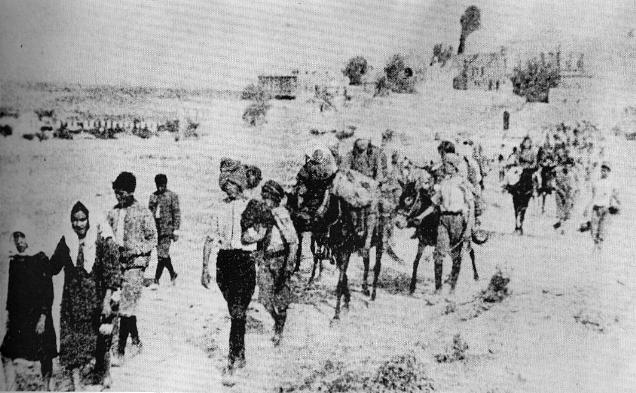How Armenians settled in South Caucasus

By Rashid Shirinov
The fake arguments of the Armenian historians that the Armenians are natives of Nagorno-Karabakh have always resented serious historians. There are numerous facts from Russian sources that Armenians were brought in the west Azerbaijani lands only in the 19th century.
Back in Soviet times, the Armenian historians invented fake research works about the history of Caucasus. Meanwhile, this area of history somehow remained out of sight of Azerbaijani historians. Taking advantage of this, the Armenians tried to present these territories as Armenian through falsifying the historical realities of individual regions of Azerbaijan.
Armenian historians showed excessive zeal in these attempts. They went so far that shamelessly distorted the political map of the Caucasus region, created stories that do not correspond to historical reality, made up fictional maps and spread them around the world. And now Armenians continue insisting on their unfounded claims. In this context, the study of the historical geography of Azerbaijan as a whole and of its individual regions is very important.
If to carefully consider the facts given in the works of Russian military historians, it becomes clear that the Armenians do not know their history or they are just unable to digest the facts that are contrary to the nationalist picture of Armenian historians.
Some Armenian historians without any evidence say about the alleged residence of Armenians in the Azerbaijani lands for centuries. They in particular mention historical Azerbaijani lands of Nakhchivan, Irevan and Karabakh.
However, Azerbaijani, as well as Russian historians, exposed this unscientific reasoning through referring to existing historical documents. They clearly show that the settlement of Armenians in the regions of Nakhchivan, Irevan and Karabakh was related to the Turkmenchay Treaty signed in 1828 between Russia and Iran.
As the Russian historian of that time Sergey Glinka noted, it hadn’t even been three months from the date of signing of the treaty, when the Russian Empire resettled 40,000 Armenians in the newly conquered Nakhchivan, Irevan and Karabakh khanates.
The initiator of this resettlement was an ethnic Armenian Christopher Lazarev. He made up and presented to the Russian government the project of resettling Armenians in Northern Azerbaijan. In the project, he introduced the idea of "reestablishing the Armenian Kingdom" within the Russian Empire. This idea served as a pretext for the ruling circles of Russia to form a Christian region on the borders with Iran and Turkey.
In March 1828, Lazarev's project was presented to the Emperor Nicholas I. The territories of the Azerbaijan khanates of Nakhchivan, Irevan, Shaki and Shamakhi were mentioned as “the ancient Armenian areas” in this infamous project.
Emperor Nicholas I was primarily interested in strengthening the border line with Turkey and Iran, which were Muslim countries. That's why he abolished the Nakhchivan and Irevan khanates by a special decree of March 21, 1828, and established artificial "Armenian province" in those areas. This region existed until 1850, and then it was transformed to Erivan governorate. Nakhchivan region was also included into it.
Thus, as a result of migration to the aforesaid territories, the Armenian population in Caucasus increased significantly. Moreover, the Imperial Russia decided to settle the migrant Armenians in those areas where the Armenians were a clear minority. For example, 50,739 Armenian families were resettled in Irevan and Daralayaz regions where only 58 Armenian families lived previously. Nakhchivan region, where only 100 Armenian families lived, was settled with 941 new families. Overall, after the conclusion of the Turkmanchay Treaty, the Armenian population increased by 4 times.
Since then, Armenians inexplicably consider the territory of today’s Armenia as “the ancient Armenian land.” Moreover, they constantly make claims to the territories of countries neighboring Armenia. However, Armenia's biggest claims are concentrated on Azerbaijan.
Not satisfied with living in Azerbaijan’s historical west lands, Armenians for over two decades occupy the Nagorno-Karabakh and seven surrounding regions of Azerbaijan. This makes up a fifth part of Azerbaijan's territory. Despite the constant calls of the international society to leave the Azerbaijani lands, including four UN Security Council resolutions, Armenia rejects withdrawing of its armed forces from Azerbaijan’s Nagorno-Karabakh and adjacent regions.
---
Rashid Shirinov is AzerNews’ staff journalist, follow him on Twitter: @RashidShirinov
Follow us on Twitter @AzerNewsAz
